Abstract
Navel orange cultivation in Japan has seen fluctuating trends in recent years. In 2006, the national harvest yield peaked at 10.4 kt, reflecting the importance of this crop. The bearing tree area averaged 951 hectares, indicating a significant portion of agricultural land dedicated to these oranges. Wakayama Prefecture led in shipping volume, with 2.11 kt, highlighting its dominant role in navel orange production. Past trends suggest stable but regionally concentrated cultivation, with areas like Wakayama being key contributors. These figures show both the nationwide scale and regional specializations within Japan’s citrus industry.
Navel orange harvest volume (main data).
Navel orange production in Japan has experienced a significant decline since its peak in 1987, when the national harvest yield reached 67 kt. As of 2006, production had dropped to just 15.5% of that peak, reflecting changing trends in the agricultural sector. Factors contributing to this decrease include shifts in consumer preferences, competition from imported fruits, and challenges in domestic citrus farming. Despite this decline, regions like Wakayama continue to lead in cultivation, highlighting regional specialization. The long-term trend shows a shift towards smaller-scale, more concentrated production in select areas, with a focus on quality over quantity.
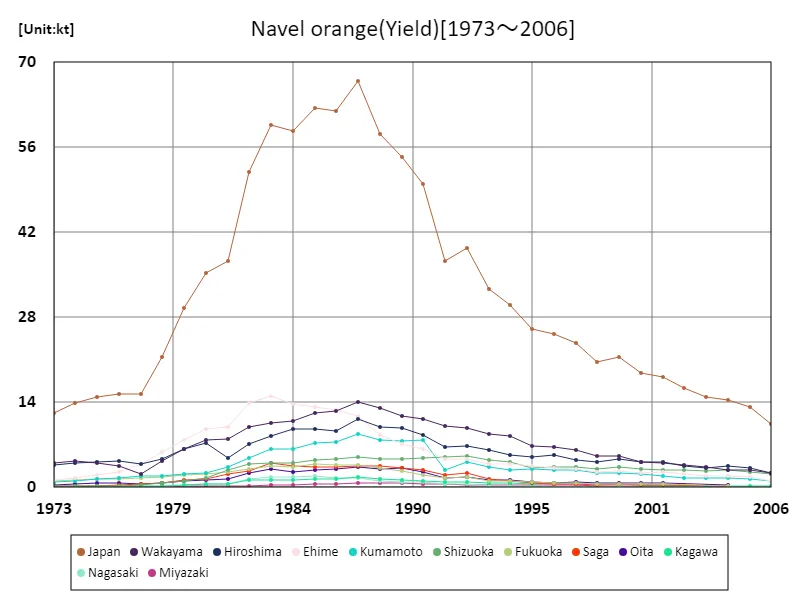

The maximum is 67kt[1987] of Japan, and the current value is about 15.5%
Navel orange harvest volume (by prefecture).
In 2006, Hiroshima Prefecture recorded the highest navel orange yield in Japan, reaching 2.41 kt, reflecting its strong role in the country’s citrus industry. This highlights Hiroshima’s favorable climate and established farming practices for navel oranges. Over the years, navel orange production has become more regionally concentrated, with key areas like Hiroshima and Wakayama leading in output. Nationwide, however, overall yields have declined significantly compared to earlier decades. The current trend emphasizes regional specialization and a focus on maintaining high-quality produce, despite the shrinking scale of national production.
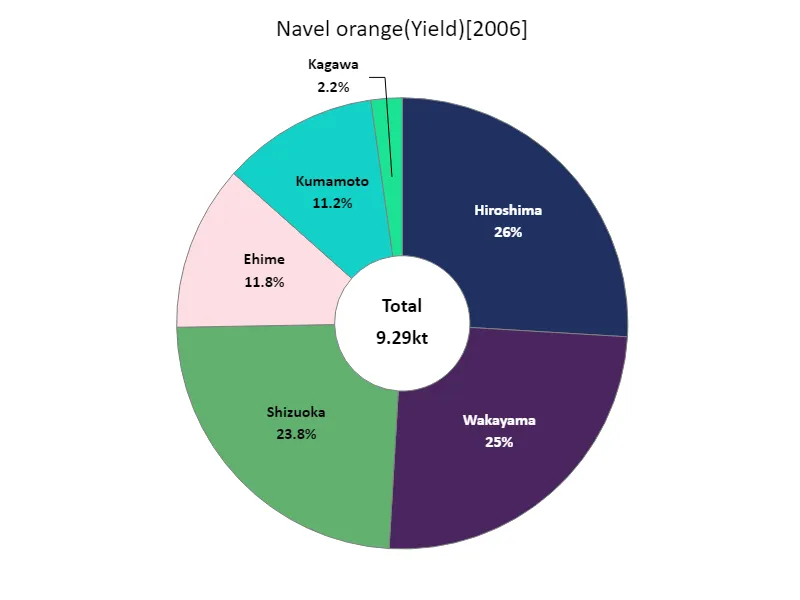

The maximum is 2.41kt of Hiroshima, the average is 1.55kt, and the total is 9.29kt
Navel orange bearing tree area (main data).
The area of navel orange bearing trees in Japanese agriculture has fluctuated between 1973 and 2006. The peak year was 1986, when the total area of fruiting trees nationwide reached 4.25 kha, but since then the area has declined and is currently at around 22.4% of the peak. This trend is likely due to changes in demand and production conditions for navel oranges. This is due to changes in demand and competition from other production areas, resulting in a decrease in tree area. Additionally, agricultural policies and technological advances are also thought to have influenced the area of fruiting trees. The current decline in fruiting tree area suggests that farmers and stakeholders need to manage their production areas while taking into account production efficiency and sustainability. One notable feature so far is the clear trend of decline in the area of fruiting trees from its peak, which calls for a shift to future agricultural strategies and environmentally conscious agriculture.
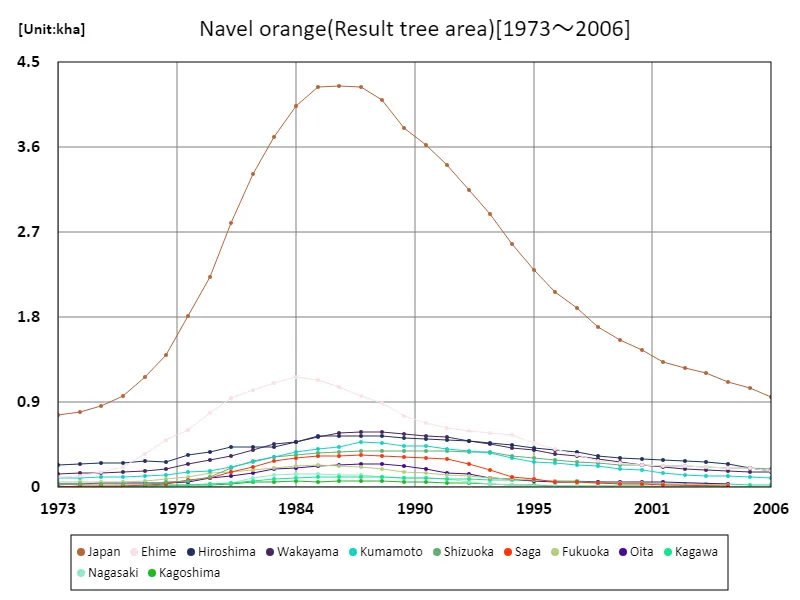

The maximum is 4.25kha[1986] of Japan, and the current value is about 22.4%
Navel orange bearing tree area (by prefecture).
According to the latest data from 2006, Shizuoka recorded the largest area of bearing navel orange trees in Japanese agriculture at 195 hectares, which is currently the largest. Considering past trends, it is suggested that navel orange production is expanding, centered around Shizuoka. While the trends in fruiting tree area in areas outside Shizuoka are unclear, Shizuoka’s growth is attracting attention. This is thought to be due to the fact that Shizuoka has a warm climate and suitable soil conditions, making it ideal for cultivating navel oranges. Regional agricultural policies and producer efforts may also be contributing to the increase in the area of fruiting trees. While the increase in fruit tree area in Shizuoka is contributing to the revitalization of the local economy and agriculture, caution is also required in terms of environmental impact and sustainability. Going forward, it will be important to increase production in each region, including Shizuoka, and to promote sustainable agricultural practices along with it.
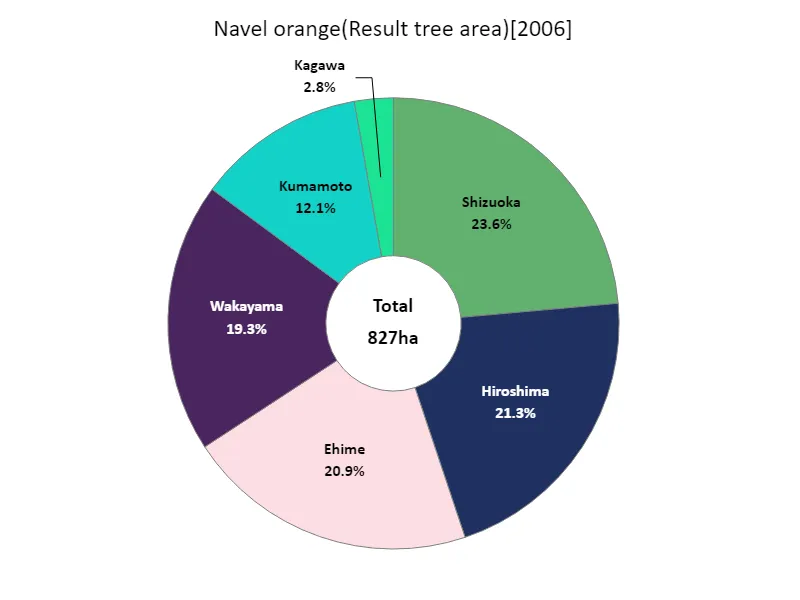

The maximum is 195ha of Shizuoka, the average is 138ha, and the total is 827ha
Navel orange shipments.
In 2006, Wakayama led Japan in navel orange shipping volume at 2.11 kt, showcasing its strength in citrus production. The national average for shipping was 1.31 kt, with a total volume of 7.84 kt. This highlights the regional concentration of navel orange production, with Wakayama standing out as a key player. Over the years, shipping volumes have decreased significantly compared to past decades, reflecting broader trends of reduced cultivation areas and shifting market demand. Despite the overall decline, regions like Wakayama maintain a strong presence, focusing on efficient production and the quality of their navel oranges.
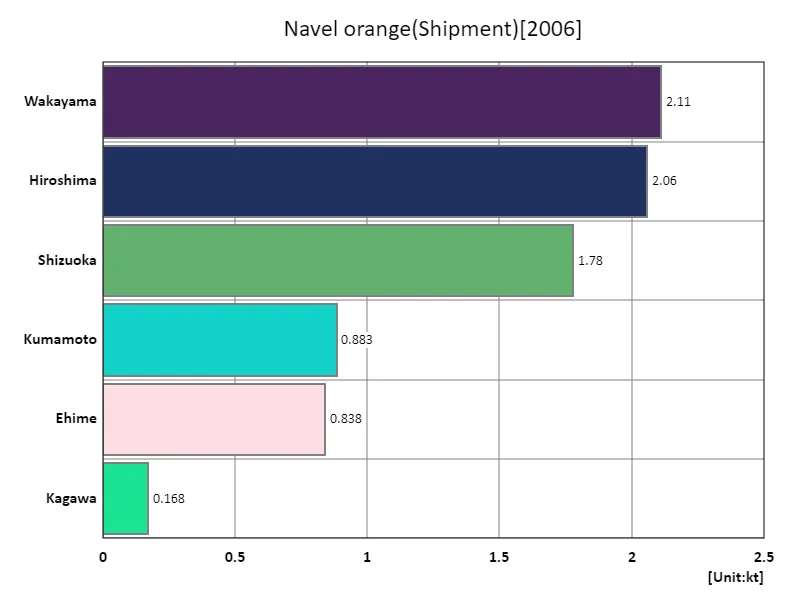

The maximum is 2.11kt of Wakayama, the average is 1.31kt, and the total is 7.84kt
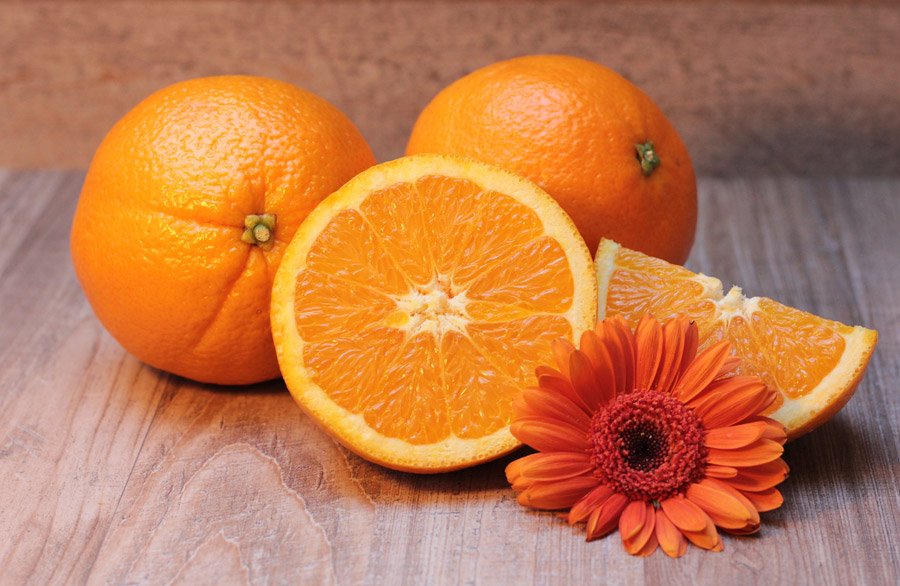


Comments